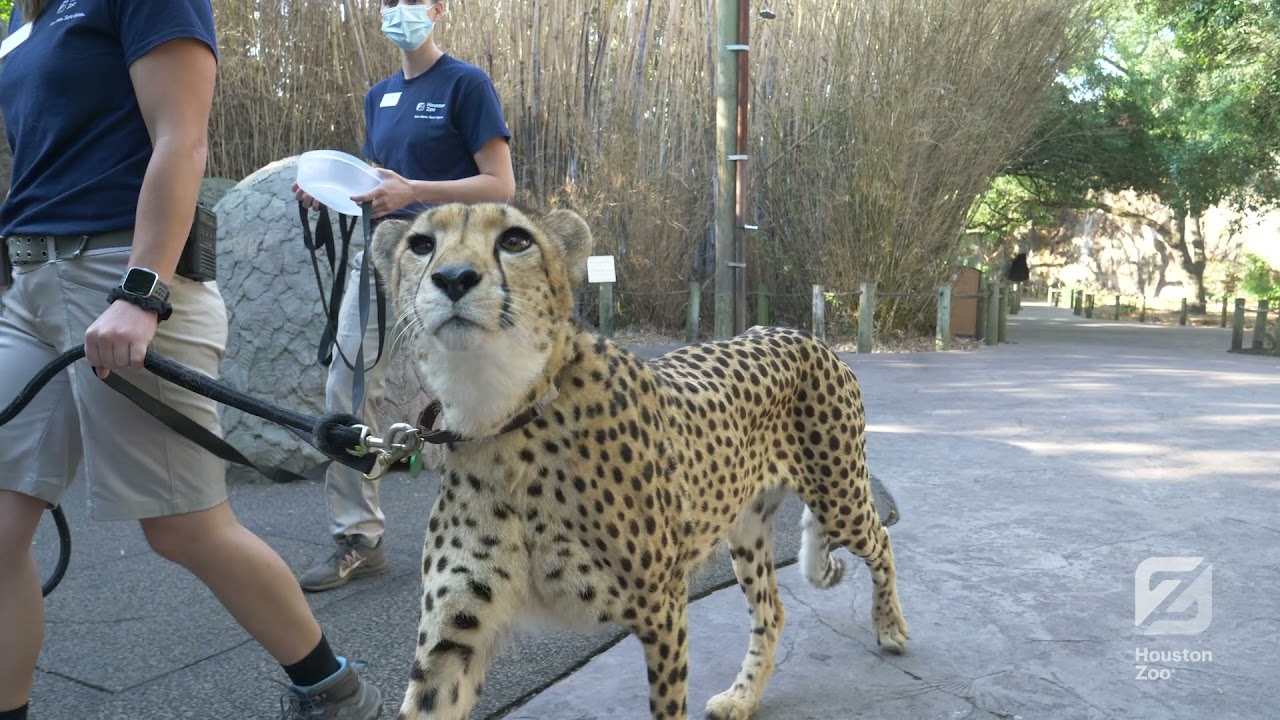*****
Summary of Transcript:
The Houston Zoo has announced its Miles for the Wild campaign, raising money for animal conservation efforts. In this video, Kathy, the senior supervisor of the carnivore department at the Houston Zoo, talks about cheetahs and how they are built for speed. Cheetahs have specific adaptations such as long legs, lean builds, and claws that work like built-in cleats, allowing them to run quickly. They are sprinters rather than long-distance runners known to run from zero to 60 miles per hour in just 3.4 seconds. Supporting the Houston Zoo helps animals like Dinari, the cheetah, showcased in this video.
*****
Summary of Description:
The Zoo takes cheetahs for walks before opening to the public to learn more about their adaptations. People can join a virtual fitness fundraiser called Miles for the Wild to save animals globally. Members can also participate in the event at the Zoo during Member Morning, presented by PNC Bank. Sign-up is available now.
*****
Walking with Dinari: The Cheetah’s Adaptive Traits
The cheetah is one of the fascinating animals in the world. With their lightning speed, impeccable agility, and keen sense of sight, it’s no wonder they are considered the world’s fastest land mammals. But did you know they have other adaptations that make them unique and efficient predators? In this article, we’ll take a closer look at some of these adaptations as we join Dinari, one of the cheetahs at the Zoo, on his morning walk.
Why do cheetahs go for walks at the Zoo?
It may seem like a simple activity, but for animals in captivity, walking around their enclosure allows them to exercise, explore their environment, and alleviate boredom. Through these walks, zookeepers also have the opportunity to interact with the animals and monitor their health and behavior.
Dinari, for instance, goes for walks in the morning as part of his daily routine. As we followed him around his enclosure, we observed how he would sniff different objects, scratch on tree trunks, and climb onto his elevated platform. These actions may seem trivial, but for cheetahs, they keep them physically and mentally stimulated.
Adaptive Traits
Aside from their speed and agility, cheetahs have other adaptive traits that help them survive in their natural habitat. One of these is their keen sense of sight. Cheetahs have binocular vision, which means their eyes are positioned at the front of their head, allowing them to see things in 3D. They also have a specialized inner ear that helps them maintain balance and coordination when they run.
Another adaptive trait that cheetahs possess is their semi-retractable claws. Unlike other big cats with fully retractable claws, cheetahs keep a portion of their nails exposed even when not in use. This helps them grip the ground as they run, giving them more stability and traction. They also have large nostrils that allow them to take in air efficiently when running at high speeds.
Conservation Efforts
Despite their impressive abilities, cheetahs face several wild threats, such as habitat loss, poaching, and conflict with humans. According to the Cheetah Conservation Fund, only an estimated 7,100 cheetahs are left in the Wild, a significant decline from their population of over 100,000 in the early 1900s.
To help conserve cheetahs and other endangered animals around the globe, the Zoo is holding a virtual fitness fundraiser called Miles for the Wild. By signing up for the event, participants can pledge to walk, run, or bike a certain number of miles and raise funds to support the Zoo’s conservation programs.
Zoo members can join the event during the Member Morning presented by PNC Bank. This event allows members to visit the Zoo early in the morning and complete their pledge while seeing some of their favorite animals up close.
Conclusion
Walking with Dinari may seem simple, but it gave us a glimpse into the fascinating world of cheetahs and their adaptive traits. Through conservation efforts like Miles for the Wild, we can help ensure that these magnificent animals and their habitats are protected for future generations to experience and appreciate.
*****
Source Description
Our cheetahs often go for walks around the Zoo before we open to the public. We recently tagged along on a walk with Dinari to learn more about some of their adaptations and why walks are important for them. You can join our virtual fitness fundraiser, Miles for the Wild, and help save animals across the globe. Members can plan to get their miles in at the Zoo during this Saturday’s Member Morning, presented by PNC Bank. Sign up now: bit.ly/3rTMoYd


